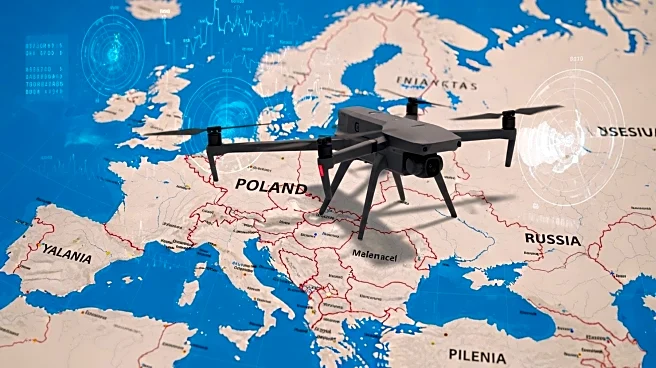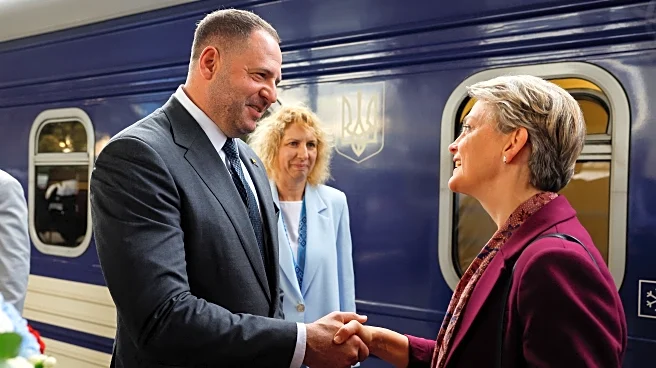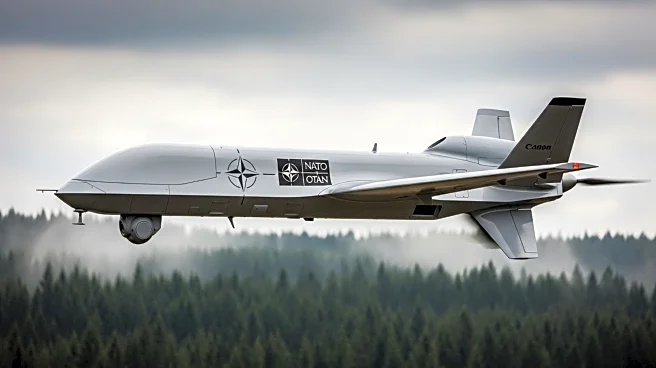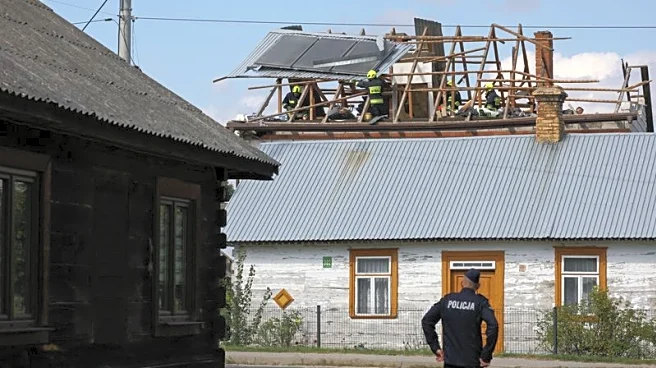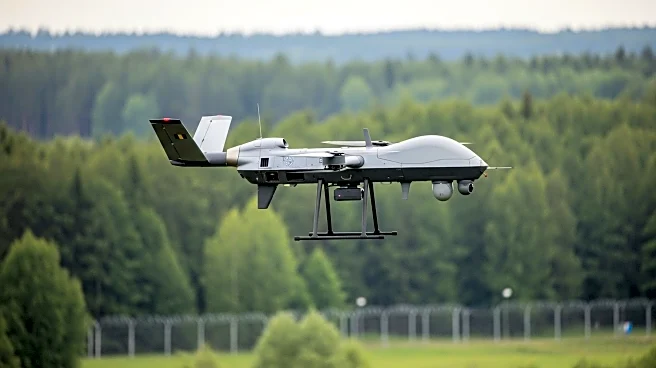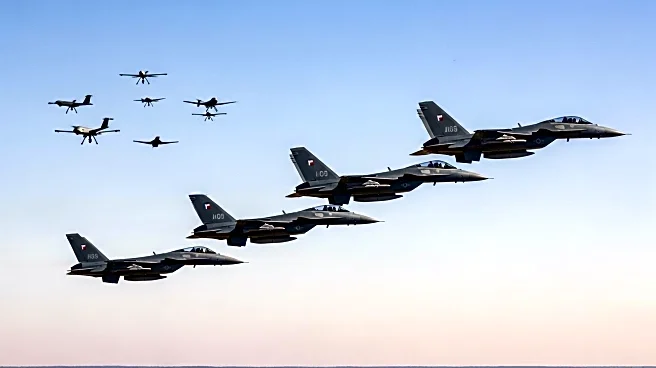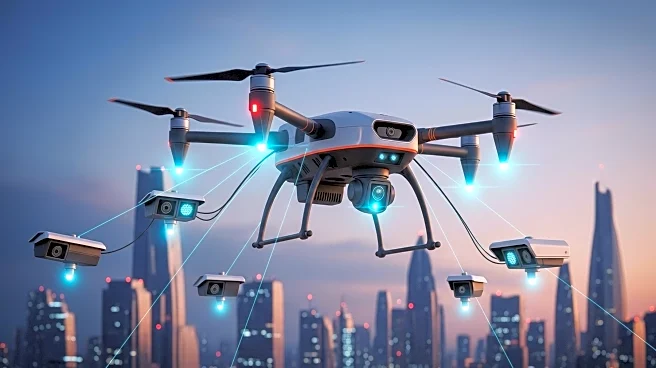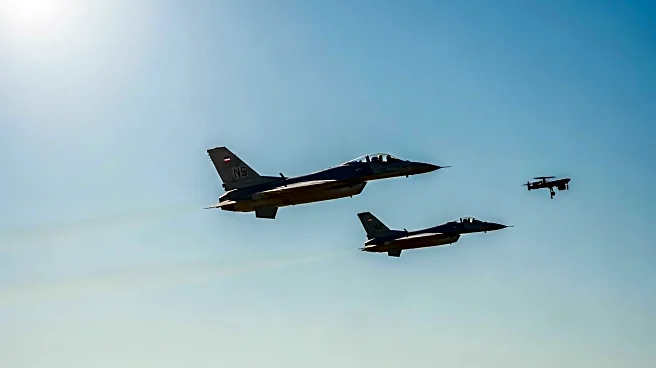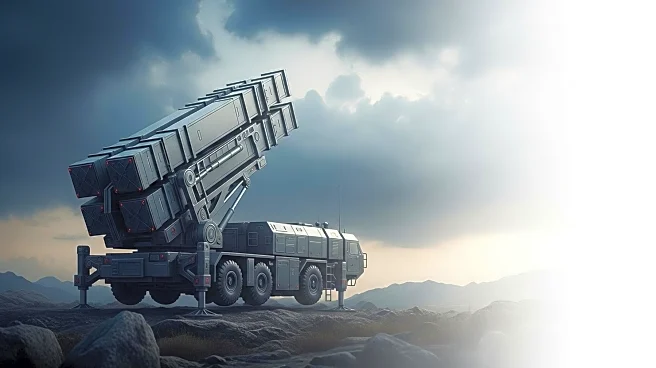What is the story about?
What's Happening?
NATO has launched Operation Eastern Sentry in response to Russian drones entering Polish airspace, marking a significant escalation in tensions. The operation involves deploying advanced military equipment, including F-35 jets and air defense systems, from European allies such as France, Denmark, and the UK. This move comes as NATO seeks to bolster its eastern flank without direct American military involvement, as the Trump administration emphasizes European responsibility for regional security. The incident has raised concerns about NATO's ability to defend its territory while supporting Ukraine against Russian aggression.
Why It's Important?
The incursion of Russian drones into Polish airspace represents a direct challenge to NATO's security and could potentially strain the alliance's resources. The situation underscores the delicate balance NATO must maintain between defending its member states and supporting Ukraine. The lack of direct U.S. military involvement highlights a shift in the alliance's dynamics, potentially leading to increased European military collaboration. This development could have significant implications for regional stability and NATO's strategic posture, as it tests the alliance's resolve and unity in the face of Russian provocations.
What's Next?
NATO's response to the drone incident may lead to further military deployments and strategic adjustments along its eastern borders. European allies are likely to continue enhancing their defense capabilities, potentially leading to increased military spending and collaboration. The situation may also prompt diplomatic efforts to de-escalate tensions, although the outcome remains uncertain. The incident could influence future NATO policies and its relationship with the U.S., as European nations reassess their security strategies in light of evolving threats.
Beyond the Headlines
The drone incursion highlights the ongoing geopolitical tensions between Russia and NATO, with potential long-term implications for European security architecture. The incident may prompt discussions on the integration of air defense systems and the need for a unified response to external threats. Additionally, it raises questions about the effectiveness of current deterrence strategies and the role of technological advancements in modern warfare. The situation could also impact public perception of NATO's capabilities and its commitment to collective defense.
AI Generated Content
Do you find this article useful?
